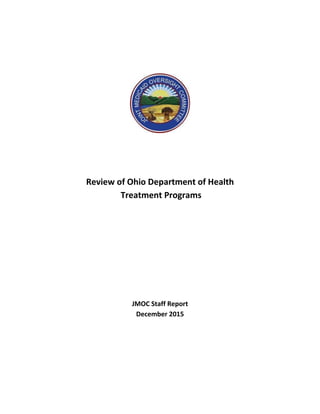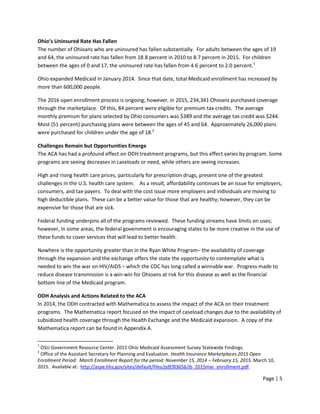The document provides an overview of treatment programs operated by the Ohio Department of Health (ODH) and analyzes how the Affordable Care Act and other changes have impacted these programs. It finds that some programs have seen decreased demand for services while others have increased. It identifies opportunities to better integrate ODH programs into the formal healthcare system to improve care, health outcomes, and lower costs. The report recommends ODH reassess its programs and consider using federal funding more flexibly and creatively to address the state's leading health issues.







































